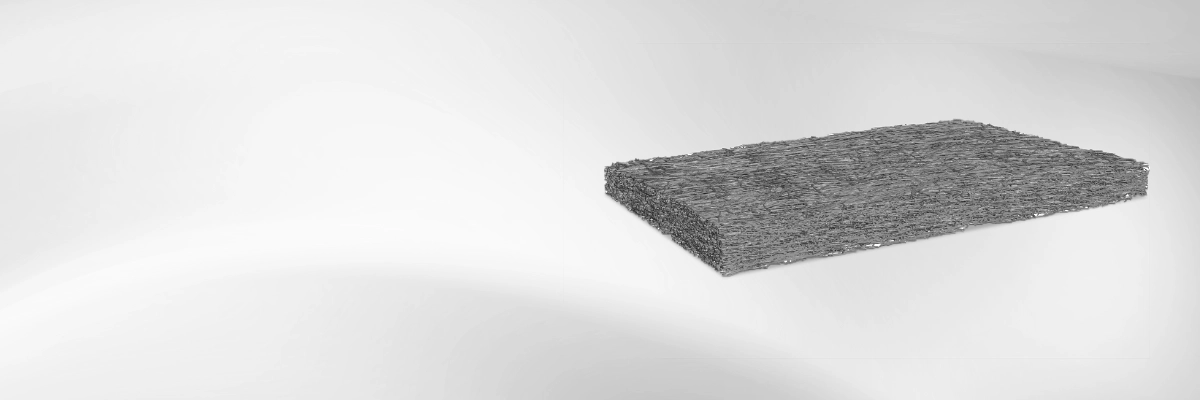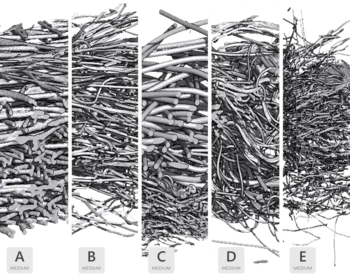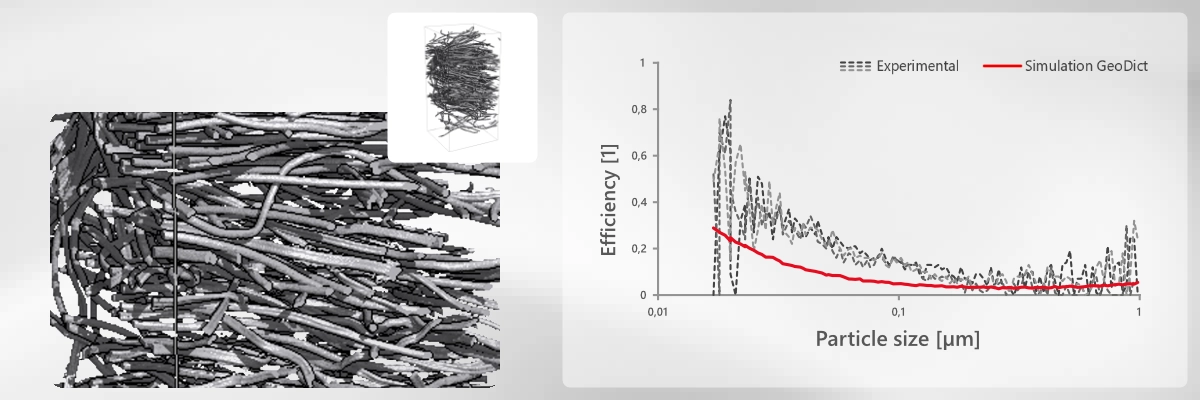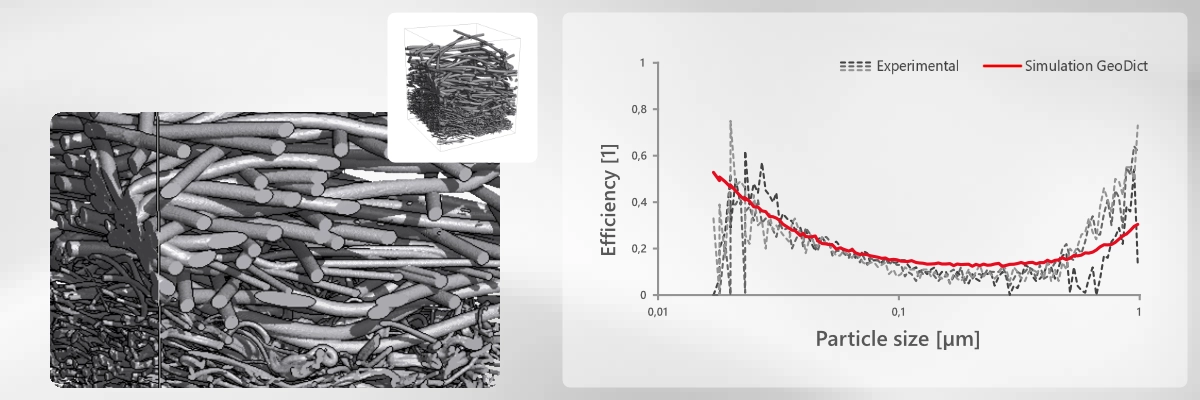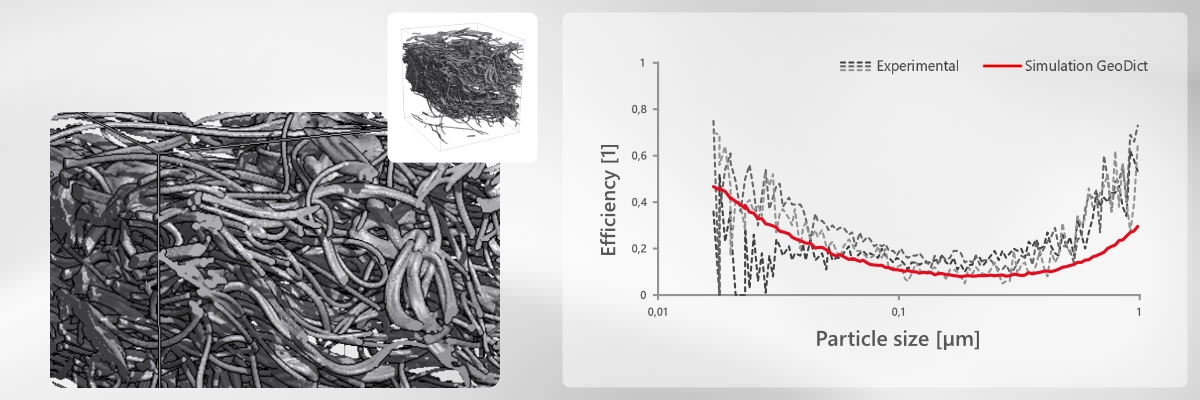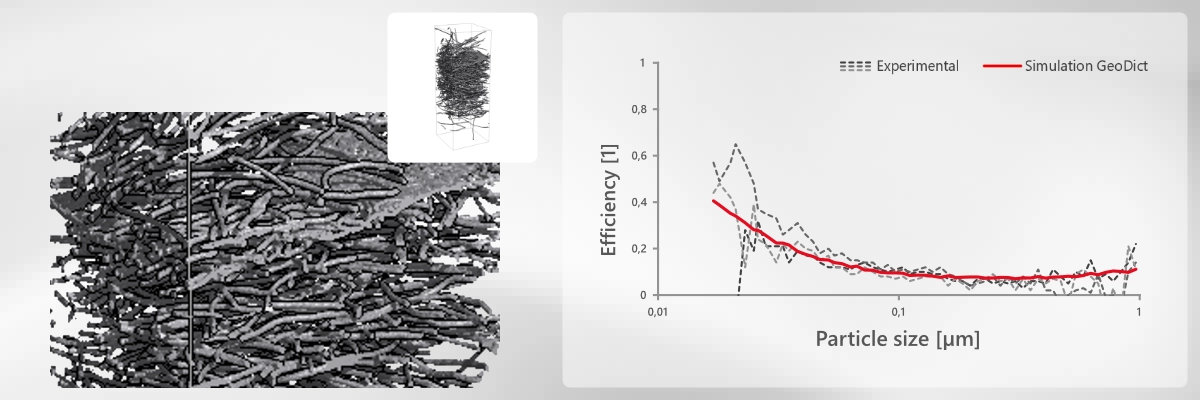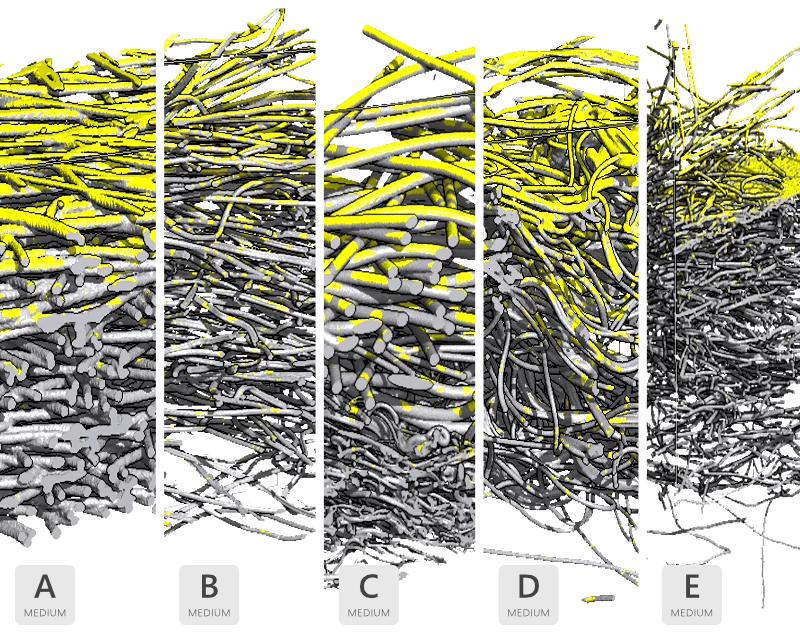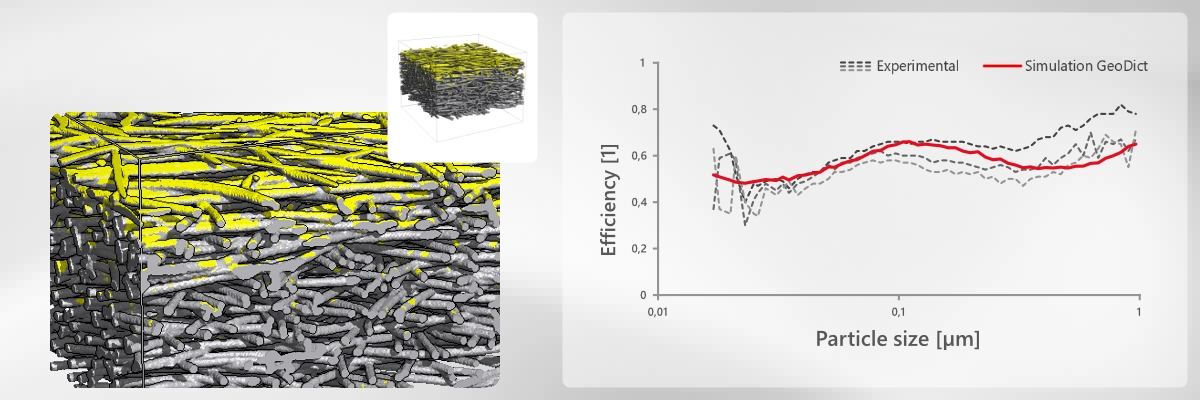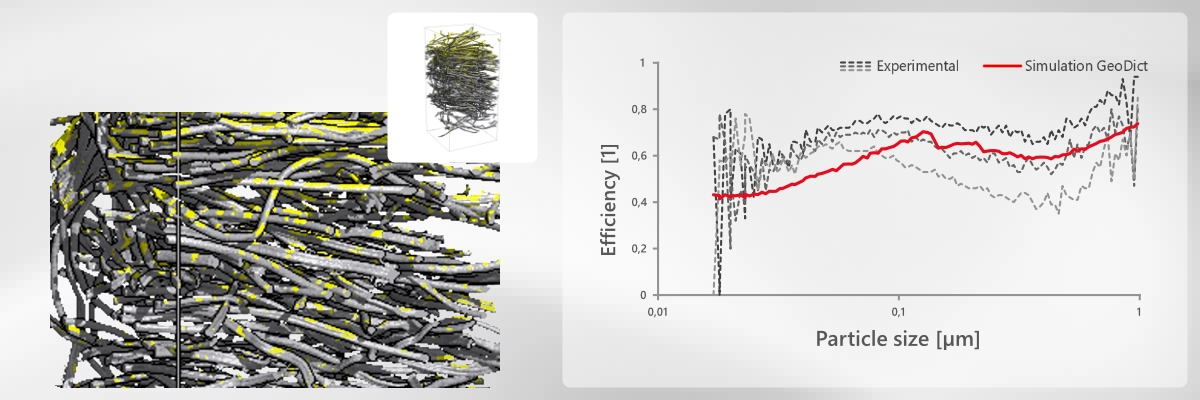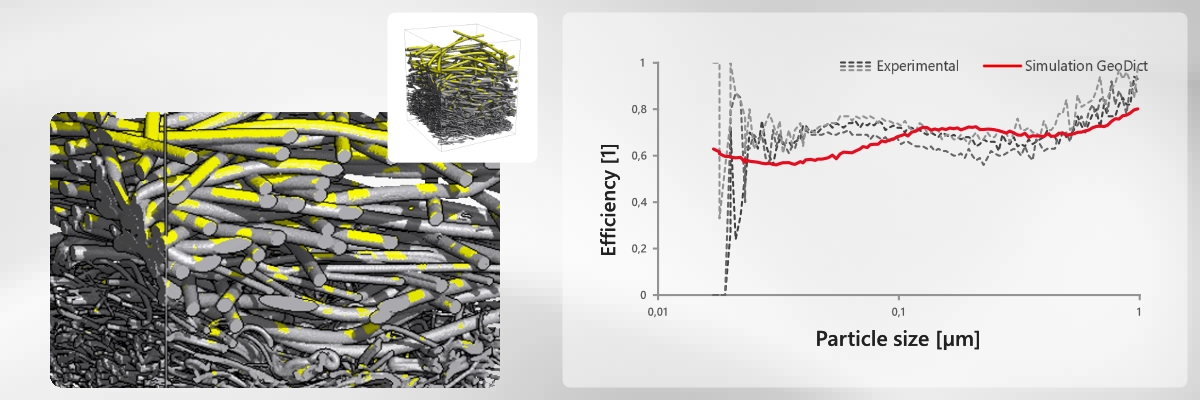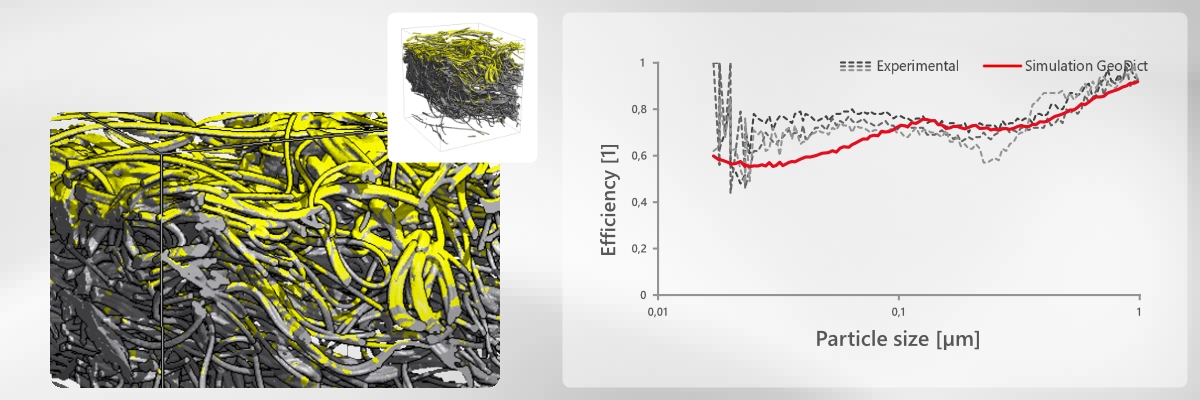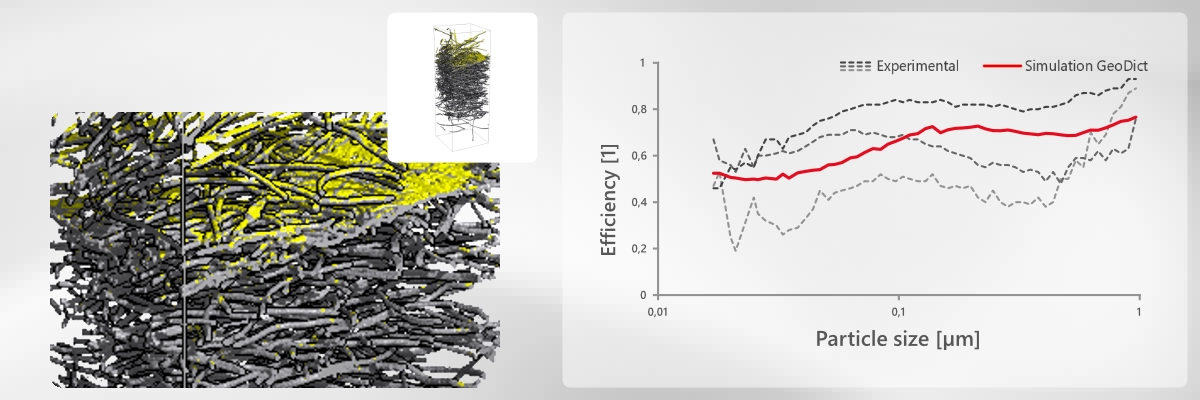Advanced Filtration Technology: Physical And Electrostatic Filter Simulations
Scientifically validated in cooperation with the IUTA institute.
Designing filters requires balancing competing demands: achieving high filtration efficiency while maintaining low airflow resistance. Additional challenges include material costs, manufacturing tolerances, and long-term performance. Simulation provides a powerful solution by enabling:
- Prediction of filtration performance for different morphologies
- Rapid comparison of design alternatives
- Reduction in costly trial-and-error experiments
- Insight into microscopic mechanisms driving particle capture
- Validation experimental results with the simulation achievements.
What do these results mean for GeoDict users?
GeoDict’s functionality can be adapted to model electret filters, which are commonly used in industry because of their excellent filtration performance. These filters work through electrostatic interactions between charged fibers and particles. Accurate performance prediction requires specialized simulation tools. The ElekSim initiative, supported by Germany’s Central Innovation Program for SMEs, is developing a tailored simulation platform for electret filters. This will allow for more effective and precise design and optimization of filter media. In partnership with IUTA, the project incorporates and validates various particle loading conditions and fiber discharge behaviors.

GeoDict converts 3D images of real filters, obtained via micro-CT or FIB-SEM analyses, into digital materials. Consequently, the real filter structure provides the basis for all subsequent filtration analyses and simulations. Different samples, each with unique shapes and morphologies are tested for simulation (filter media A–E).
Electrostatic filtration enhances particle capture using electrostatic forces. Charged fibers attract and retain fine particles that would otherwise escape through physical pores. In both physical and electrostatic simulations, the simulation time increases with the size of the selected sub-volume of the segment.
The GeoDict solution for electret filters
In addition to GeoDict Base, the GeoDict package includes all necessary modules for research and development of electret filters and analysis of electrostatic influences on filter media.
Module recommendations
| Image Processing & Image Analysis | ImportGeo-Vol | |
| Characterization & Analysis | FiberFind-AI | |
| Modeling & Design | FiberGeo | |
| Simulation & Prediction | FilterDict | FlowDict |
Which modules are best suited to you depends on the type of application you have.






